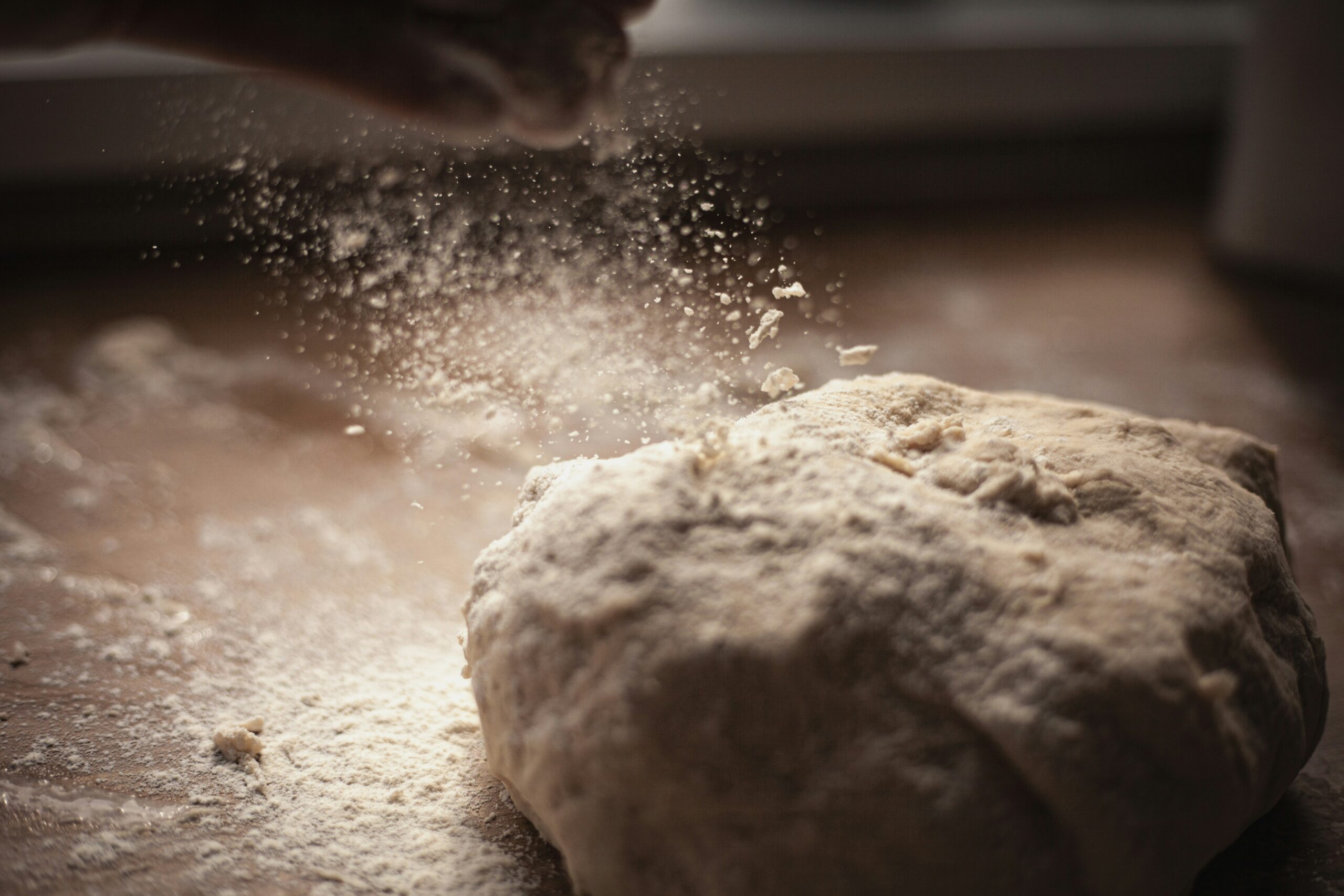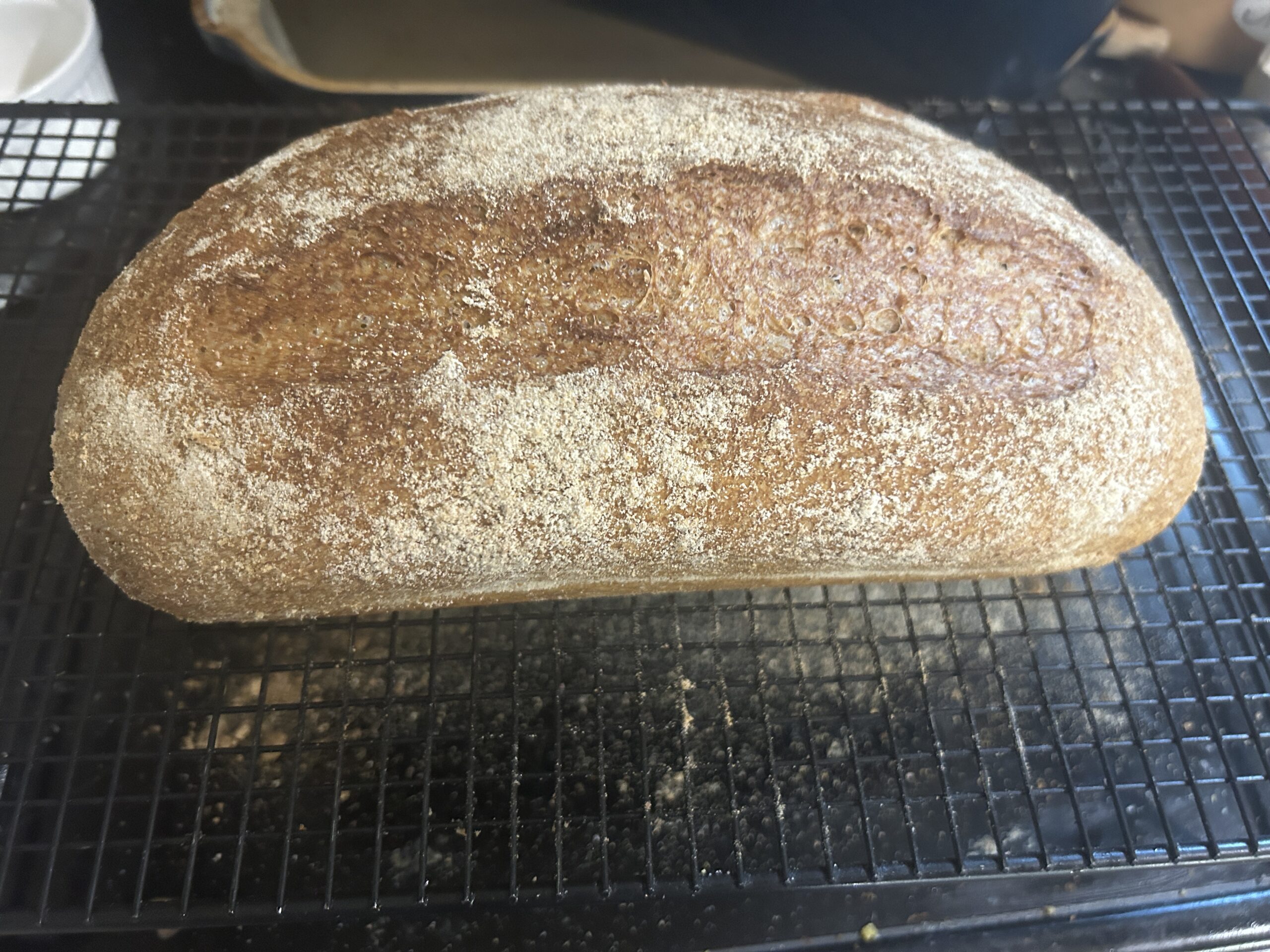After passing the windowpane test, next up is fermentation. This is also called the “first rise”, where the yeast feed on sugars and starches in the dough. Carbon dioxide is produced, which gives our bread loft and holes. The warmer the environment, the faster the fermentation. The cooler the environment, the slower the fermentation and greater the flavor complexity.
Directions:
Place the dough in a container at least twice its size to allow for expansion. Cover the container, and keep it in a warm place until it doubles in size.
Finger Poke Test
The finger poke test is how you tell if you need to let the dough rise longer. Lightly poke the dough with a wet finger, down to the first knuckle. A dent should remain or spring back very slowly if it is properly fermented.
What finger poke test results mean?
springs back quickly – it’s under-fermented
slowly fills back in or a dent remains – properly fermented
deflates a little (or a lot) – over-fermented
It’s okay to have under-fermented dough if you will be doing a lot of work during the shaping phase, such as with some types of rolls. Working quickly helps, but slightly under-fermenting the dough during this step can help you get through shaping without over-proofing your bread later on.
If you over-proofed your dough, that’s okay. Just move quickly through shaping or consider making flatbread or focaccia dough (which don’t need need much of a rise to be great).
Do I have to do the first rise?
No. It’s absolutely optional. The first rise helps to develop a stronger dough, especially if you are kneading by hand. There are times when I will absolutely do a first rise no matter what – and one of those is if I’m working with a wetter (also known as high hydration) dough. This first rise allows even more time for the flour to absorb the fats and the liquids, and often by the time we get to the end of the first rise there is no need to add more flour.
What if my dough is still too wet after the first rise?
Depending on HOW wet the dough is, I’d do one of two things – and they will BOTH be discussed in the next step of the fresh milled bread method. In short, I’d either use oil on my hands and the board OR I’d add only enough flour to handle the dough for shaping.
Next step: Punching Down the Dough



